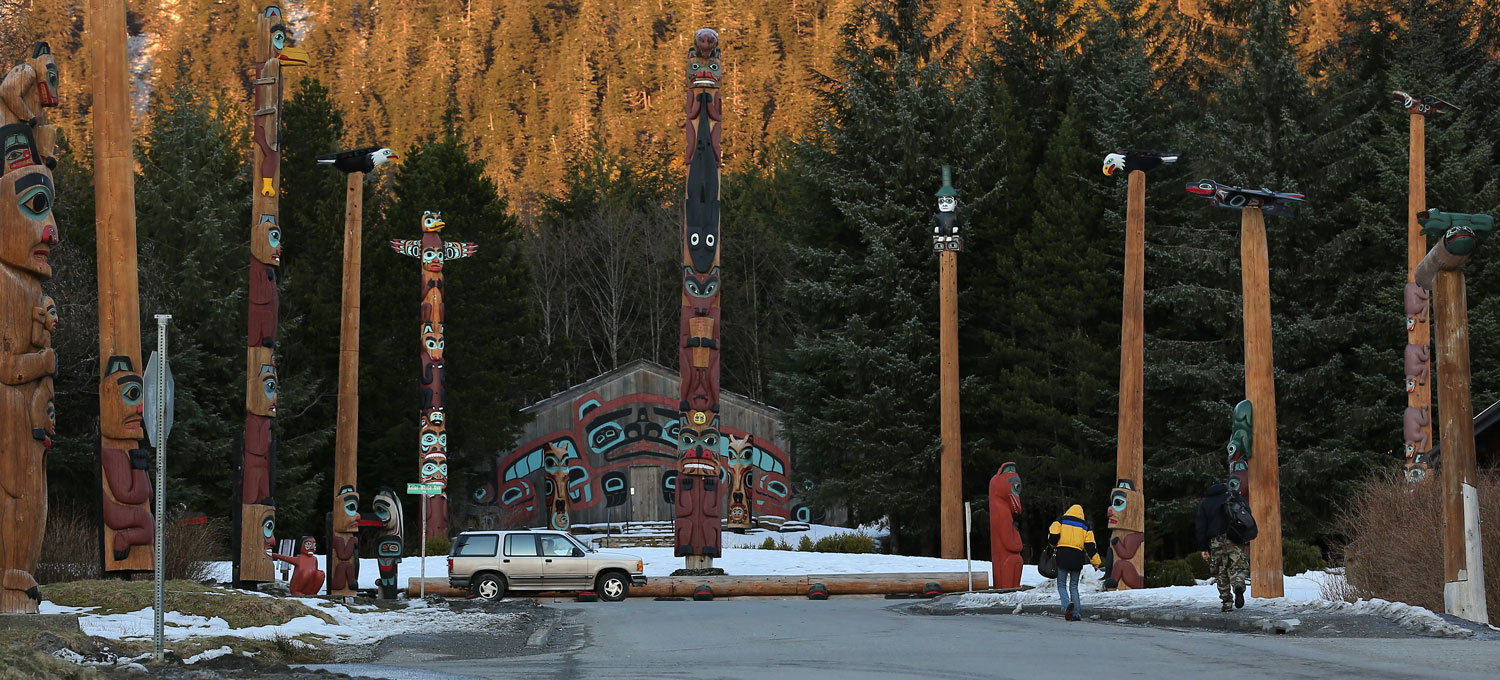Kasaan Whale House Rededication Postcard
/The previous post told a little about the Whale House Rededication and Kasaan. Please enjoy more photos of the event in this post.

Haida drummers dance and sing at the Whale House Rededication Ceremony.


Hand painted canoe paddles on the dock at the harbor.

Men stand at the prow of their canoe at the Whale House Rededication ceremony. Humor is an important part of Haida culture, and there was a lot of laughter at the celebration.

Alaska Native canoe prow.

Cedar bark hats (and cell phones taking photos) were everywhere!

Harley's drum has seen a lot of use!

There was a big crowd at the Whale House. The frontal totem in this photo is huge and towers over 50 feet high.

A dancer on the beach enjoyed the singing and drumming.

The Haida dancers sang and drummed as they danced their way around the longhouse.

Totem poles at the Kasaan Totem Park next to the Whale House.

Inside the Whale House there are three totem poles that tell Haida stories.

These totem poles are over a century old.

This beautiful Haida woman stood by the canoe that she helped paddle to the ceremony in Kasaan.

Paddles raised, the Haida people wait to go ashore.
Great finds
- Casino Sites UK
- Best UK Non Gamstop Casinos
- Non Gamstop Casinos
- Non Gamstop Casinos
- UK Casinos Not On Gamstop
- Non Gamstop Casino
- Gambling Sites Not On Gamstop
- Non Gamstop Casino
- Non Gamstop Casino
- Non Gamstop Casino Sites UK
- UK Casino Not On Gamstop
- Meilleur Casino En Ligne
- Gambling Sites Not On Gamstop
- Best Casinos Not On Gamstop
- I Migliori Casino Non Aams
- Non Gamstop Casino Sites UK
- Casino Sites Not On Gamstop
- Non Gamstop Casino
- Casinos Not On Gamstop
- Slots Not On Gamstop
- Non Gamstop Casino Sites UK
- Casino Non Aams Sicuri
- Meilleur Casino En Ligne Fiable























